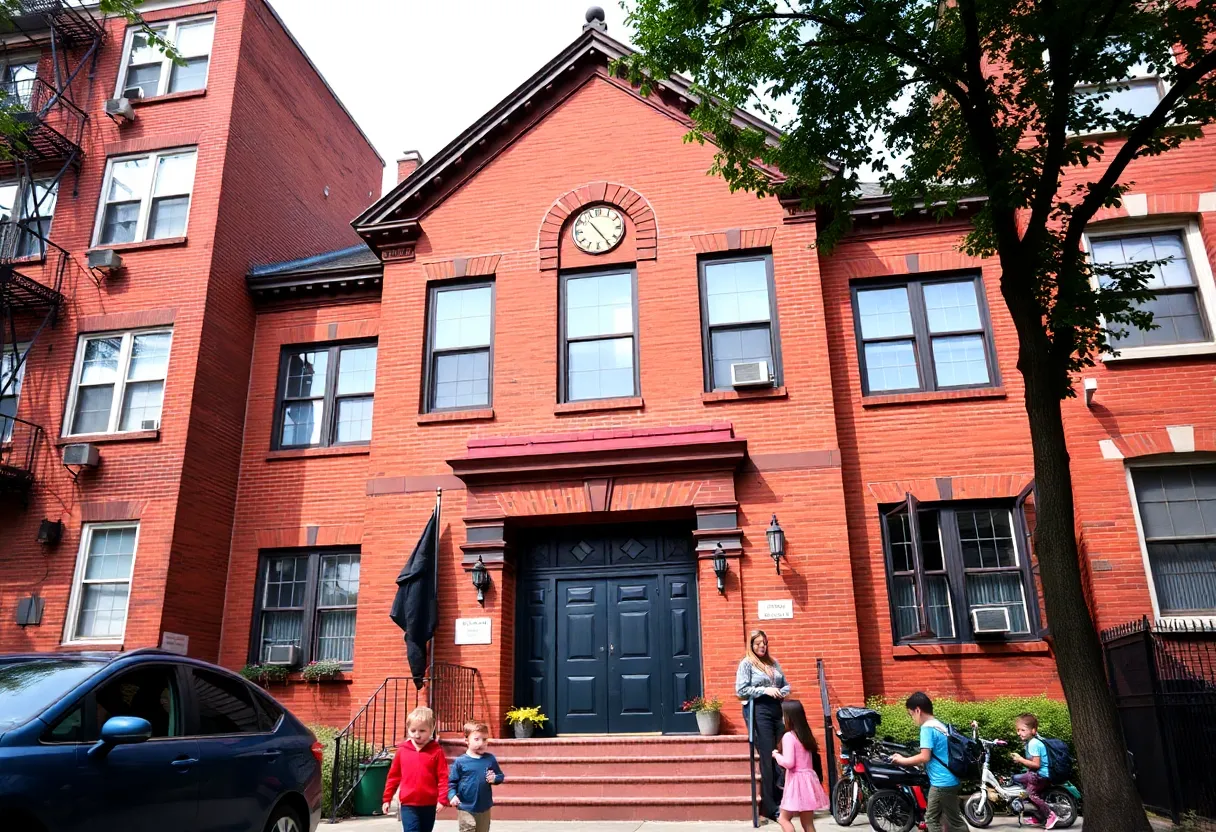Exploring the Little Red School House: A Legacy of Educational Innovation in New York City
The Origins of the Little Red School House
The Little Red School House emerged in the early 20th century as part of a broader movement toward progressive education in New York City. It was initially conceived to challenge traditional, rote memorization-heavy schooling methods that dominated urban classrooms. The institution sought to foster a learning environment emphasizing critical thinking, creativity, and individualized instruction.
Established in 1934, the school was positioned in Greenwich Village, an area known for its cultural dynamism and intellectual openness. Its placement reflected an intent to serve a diverse student population, including children from immigrant families, working-class backgrounds, and middle-income households.
Philosophy and Educational Approach
The school adopted an innovative pedagogical philosophy centered on student engagement and experiential learning. Unlike conventional schools that relied on strict disciplinary standards, it promoted a democratic classroom atmosphere where students’ voices shaped their educational journey.
Key elements of this approach included:
- Child-centered instruction
- Emphasis on arts and sciences
- Integration of play and hands-on projects
- Flexible curricula that encouraged curiosity and exploration
This methodology aimed to prepare students not just academically but also socially and emotionally, fostering independence and confidence.
Design and Architecture of the School
The Little Red School House was originally a modest building, characterized by its distinctive red brick exterior. Its architecture reflected functional simplicity, with large windows to maximize natural light and flexible interior spaces conducive to varied teaching styles.
Throughout its history, the school underwent several expansions and renovations to accommodate increasing enrollment and evolving educational needs. Its design prioritized student comfort and adaptability, embodying the innovative spirit of its educational philosophy.
Innovations in Curriculum and Pedagogy
Project-Based Learning
The school pioneered the use of project-based learning, encouraging students to apply knowledge through real-world tasks. Projects ranged from community art installations to ecological studies, fostering both teamwork and problem-solving skills.
Integration of Arts and Creativity
Recognizing the importance of arts, the institution integrated visual arts, music, and drama into daily curricula. Such integration aimed to develop well-rounded individuals capable of expressing themselves creatively and critically.
Focus on Social-Emotional Development
Staff prioritized social-emotional learning, emphasizing empathy, conflict resolution, and self-awareness. This holistic approach distinguished the Little Red School House from traditional models that often marginalized such aspects.
Notable Figures and Contributions
Over the decades, the school attracted educators and thought leaders dedicated to progressive education. Many former teachers contributed to educational literature, influencing broader pedagogical standards.
Alumni include prominent educators, artists, and social activists who attribute their foundational skills and values to experiences at the school. Their careers exemplify how the school’s innovative methods foster lifelong learning and engagement.
Role in Broader Educational Movements
The Little Red School House became an influential model for alternative education nationwide. Its success inspired various experimental schools and Community Learning Centers that prioritized similar principles.
During the mid-20th century, the institution actively participated in discussions about public education reform. Its advocacy influenced policies that promoted experiential learning and democratic classrooms within the public school system.
Evolution and Modernization
While rooted in early 20th-century ideals, the school has continually evolved. In response to technological changes, it integrated digital literacy and multimedia resources into its curriculum.
In recent decades, a focus on inclusivity and multicultural education further distinguished its approach. These adaptations aimed to meet the needs of an increasingly diverse student body while maintaining its core innovation-driven philosophy.
Community Engagement and Cultural Impact
The school’s location in Greenwich Village fostered close ties with local artists, writers, and social movements. Its campus became a hub for community events, workshops, and cultural exchanges.
Through programs and outreach, the Little Red School House has contributed to the cultural fabric of New York City, promoting values of creativity, diversity, and active citizenship.
Challenges and Critiques
Despite its successes, the school faced criticism, especially regarding resource allocation and accessibility. Some argued that the school’s progressive model was difficult to scale within the broader public school system.
Financial constraints and changing city policies periodically threatened its sustainability. Nevertheless, its legacy persisted through ongoing efforts to innovate within urban education frameworks.
Legacy and Continuing Influence
The Little Red School House remains a symbol of educational innovation. Its pioneering methods continue to influence modern pedagogical debates and practices.
Its emphasis on student agency, arts integration, and social-emotional learning has been incorporated into numerous contemporary curricula. The school exemplifies how a commitment to progressive principles can foster meaningful and lasting change in education.
Significance in New York City’s Educational Landscape
As one of the earliest adopters of progressive pedagogy in NYC, the school has played a vital role in expanding opportunities for experiential and inclusive education.
Its history reflects the city’s broader struggles and successes in providing equitable, innovative learning environments amidst diverse social and economic challenges.
Looking Ahead: Continuing the Legacy
The future of the Little Red School House hinges on balancing tradition with innovation. Continuing to adapt to technological advancements and social changes is central to its ongoing relevance.
Its enduring influence affirms that fostering creativity, critical thinking, and social responsibility remains essential in education.
Author: STAFF HERE NEW YORK WRITER
The NEW YORK STAFF WRITER represents the experienced team at HERENewYork.com, your go-to source for actionable local news and information in New York, the five boroughs, and beyond. Specializing in "news you can use," we cover essential topics like product reviews for personal and business needs, local business directories, politics, real estate trends, neighborhood insights, and state news affecting the area—with deep expertise drawn from years of dedicated reporting and strong community input, including local press releases and business updates. We deliver top reporting on high-value events such as New York Fashion Week, Macy's Thanksgiving Day Parade, and Tribeca Film Festival. Our coverage extends to key organizations like the Greater New York Chamber of Commerce and United Way of New York, plus leading businesses in finance and media that power the local economy such as JPMorgan Chase, Goldman Sachs, and Bloomberg. As part of the broader HERE network, including HEREBuffalo.com, we provide comprehensive, credible insights into New York's dynamic landscape.





